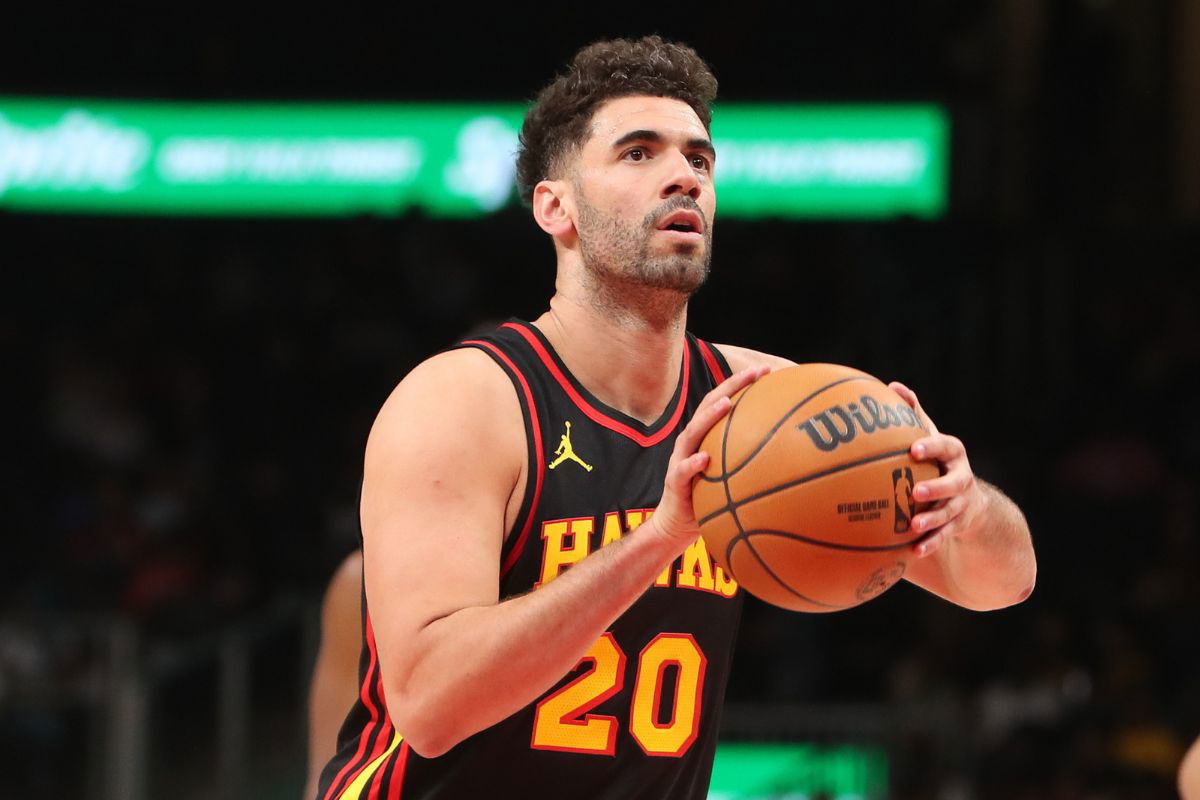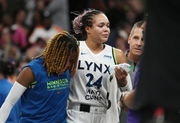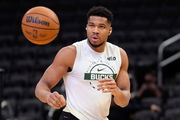
Imago
Image Credits: IMAGN

Imago
Image Credits: IMAGN
The Celtics wrapped up the 2024–25 regular season with a strong 61–21 record, good for a .744 winning percentage and a dominant 39–13 run in the Eastern Conference. They averaged over 116 points per game, moved the ball well with 26.1 assists, and stayed solid defensively. But after back-to-back years of 60+ wins, Boston fans are asking the same question again: what’s next?
Watch What’s Trending Now!
According to ESPN’s Bobby Marks on X, this summer, for the Celtics, was all about one thing: “a summer of savings and reshaping their roster.” And it shows. The numbers tell the story better than anything. Just a few weeks ago, on June 15, the Celtics were staring down a combined projected salary + luxury tax bill of $540 million. Fast forward to August 5, and that number’s down to $239 million. That’s not a minor trim – that’s a full-scale reset. The goal? Get financially lean without blowing up the core.
Let’s break down what that “reset” actually looks like on the court. Bobby Marks shared this ‘unofficial’ (the Celtics are yet to confirm) Boston’s projected roster for 2025–26, and here’s how it’s shaping up with the starting five looking like this:
ADVERTISEMENT
| Position | Player | Notes |
| Guard | Derrick White | – |
| Guard | Anfernee Simons | AG: 9/7 |
| Forward | Jaylen Brown | – |
| Forward | Chris Boucher | 12/15 |
| Center | Neemias Queta | PG |
The Celtics’ bench unit is a solid mix of youth, versatility, and potential upside. Among the key reserves are Payton Pritchard, Hugo Gonzalez, and Baylor Scheierman. You’ve also got Sam Hauser, Josh Minott (with a contract date of 12/15), Jordan Walsh (noted as non-guaranteed), Xavier Tillman, and Luka Garza (also listed with a 12/15 date). Jayson Tatum is included as well, but marked with an “(I)”—likely indicating injury status for now. As for two-way players, Boston’s rolling with Miles Norris, Max Shulga, and RJ Luis (who came into the picture after the Georges Niang trade) to add depth and flexibility across the board.
Celtics updated roster pic.twitter.com/8tZT0uC090
— Bobby Marks (@BobbyMarks42) August 5, 2025
ADVERTISEMENT
On the asset front, Boston’s in a decent spot for both future flexibility and mid-season moves. They currently hold six incoming first-round picks, with two of them available for trade, plus four future second-rounders. In terms of cap maneuverability, they’ve got the $5.7 million Taxpayer Mid-Level Exception, and a trio of trade exceptions worth $22 million, $8.2 million, and $4.7 million. Add in the second-round exception and the veteran minimum slot, and it’s clear the front office has kept a few tools in their back pocket for later.
Extension-wise, all eyes are on Anfernee Simons and Jordan Walsh, both of whom are eligible for new deals. And while there are still a few questions—like how long Tatum might be out or what the long-term plan at center looks like—Boston’s transformation from a $540M tax mess to a much leaner $239M setup is impressive. Whether that turns into wins on the court remains to be seen, but financially and structurally, the Celtics just pulled off one of the most calculated resets we’ve seen in years.
ADVERTISEMENT
Financially, they’re still above the tax threshold of $187.8M, with a projected salary of $199.9M. Here’s how their financial picture looks now:
| Category | Amount |
| Tax Threshold | $187.8M |
| Projected Salary | $199.9M |
| 1st Apron | $195.9M |
| 2nd Apron | $207.8M |
So, if you were hoping for a sense of continuity in Boston’s rotation next season, you might want to sit down, because five guys just walked off with their seats. Kristaps Porzingis and Jrue Holiday were both shipped out before the NBA Draft. Luke Kornet packed his bags for San Antonio. Al Horford might come back, but let’s be honest, no one’s too optimistic about that. And Jayson Tatum? As we said, no updates and as per reports, he seems likely to miss the entire season.
ADVERTISEMENT
That leaves Boston with some open slots, especially in the frontcourt. Currently, the Celtics have 14 guys signed up for the 2025-26 season, but don’t expect a new face just yet. According to MassLive’s Brian Robb, the team plans to enter the season with that 15th seat left empty. But don’t panic just yet- this isn’t exactly new behavior. For the past two years, Boston has played the long game: start with 14 players, then sneak in a 15th later in the season when things settle.
Why the empty spot, you ask? Two words: cap flexibility. Still and all, there have been whispers about Ben Simmons, who is reportedly still undecided on where he wants to go. Also lingering in the rumor mill is Charles Bassey, a Summer League standout who briefly flirted with going overseas.
While we are yet to see how it will play out, the strategy has its perks. It gives young players a real shot at earning rotation minutes instead of being permanently benched behind veterans. Plus, if another team unexpectedly cuts a player Boston likes, the Celtics can swoop in. And if none of the above pans out? No big deal. They can always give a two-way guy a late-season glow-up, just like they’ve done the past couple of years.
ADVERTISEMENT
Celtics flip Niang to Jazz in a surprise money-saving move
Well, Celtics fans, just when the NBA offseason was starting to feel a bit sleepy, Boston shook things up again. The team has traded Georges Niang — yes, the same Niang who just arrived in Boston a month ago in that three-team Kristaps Porziņģis deal — back to his old stomping grounds in Utah. Along with him, the Celtics are sending two future second-round picks, and in return, they’re getting rookie wing RJ Luis Jr., who had just signed a two-way deal with the Jazz after going undrafted out of St. John’s. You may not have heard much about Luis yet, but he’s the reigning Big East Player of the Year, and he brings some upside at 6’7”, 215 lbs with a solid college résumé: 18.2 points and 7.2 rebounds per game.
But let’s be real — this move wasn’t just about talent. It was also very much about the money. Niang’s contract was $8.2 million and set to expire after this season. By offloading it into Utah’s $26.6M trade exception (from the John Collins deal), the Celtics just gave themselves serious cap breathing room. Before this trade, Boston was looking at a $73.1 million luxury tax bill. After the deal and the signing of Chris Boucher (who joined Boston on a one-year, $3.3M deal), that number drops to $30.4 million. In total, Boston is now $10.2M below the second tax apron and only $1.7M over the first.
ADVERTISEMENT
So what does this all mean for the roster? First off, Niang was part of the cap reshuffling after the Porziņģis and Jrue Holiday trades, both designed to get Boston out of tax trouble. And while Boston might not be a full-blown title favorite next season, Brad Stevens isn’t just dumping money for the sake of it. RJ Luis gives them youth and potential, Boucher brings veteran depth to a thinned-out frontcourt (especially with Porziņģis gone and Horford likely not returning), and most importantly, Boston has regained flexibility. Still, as mentioned earlier, don’t be surprised if there’s more action ahead.
Top Stories
Kyrie Irving Breaks Silence After Injury Return Update Emerges

Prayers Pour In For Napheesa Collier After Unfortunate Health Announcement

Michael Jordan Could Have Repaired Scottie Pippen Relationship if He Wanted To: Former Teammate

Is Austin Reaves Dating YouTuber SteveWillDoIt’s Ex-Girlfriend? Fact Checking Viral Claim

Is Giannis Antetokounmpo Playing Tonight? Bucks vs Hornets Latest Injury Report (Jan 2)

ADVERTISEMENT
ADVERTISEMENT
ADVERTISEMENT

